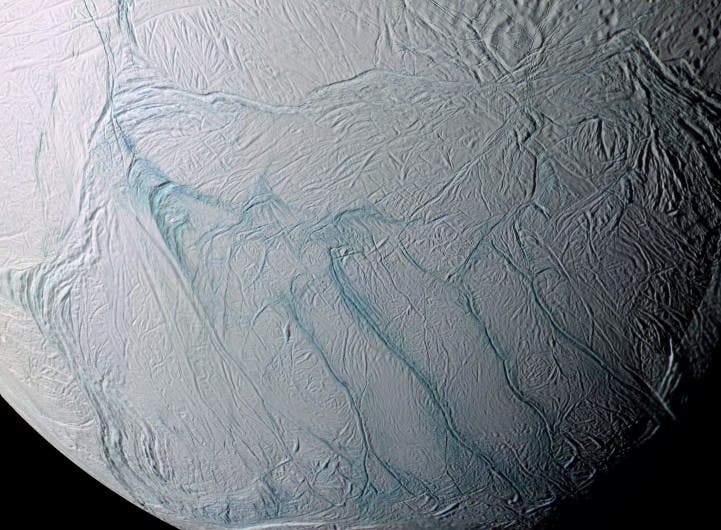It’s been quite a while since we published anything about the Cassini mission, but that doesn’t mean it hasn’t been active. The information it keeps sending back to Earth is priceless, and at some points, totally surprising. This was also the case of the Saturn Moon Enceladus, which appears to give out much more heat than previously estimated, according to the study published in the Journal of Geophysical Research.
Data from Cassini’s infrared spectrometer indicates that the internal heat-generated power is about 15.8 gigawatts, the equivalent of 20 coal-fueled power stations, which is more than 10 times the expected output. Carly Howett, the lead author of study, who is a postdoctoral researcher at Southwest Research Institute in Boulder, Colo., and a composite infrared spectrometer science team member, was absolutely stunned to see the results.
“The mechanism capable of producing the much higher observed internal power remains a mystery and challenges the currently proposed models of long-term heat production,” said Howett.
It has been known since 2005 that Enceladus is geologically active, and a study published two years later predicted its internal heat, claiming that it couldn’t be greater than 1.1 gigawatts, maybe plus another 0.3 gigawatts due to heating from natural radioactivity. This latest study published on the issue covered the entire south pole terrain, and the high temperatures suggest that there is way more liquid water than previously believed on Enceladus, bringing this Saturn’s moon in the top spots of interest for astrobiologists.
“The possibility of liquid water, a tidal energy source and the observation of organic (carbon-rich) chemicals in the plume of Enceladus make the satellite a site of strong astrobiological interest,” Howett said.
Picture source







